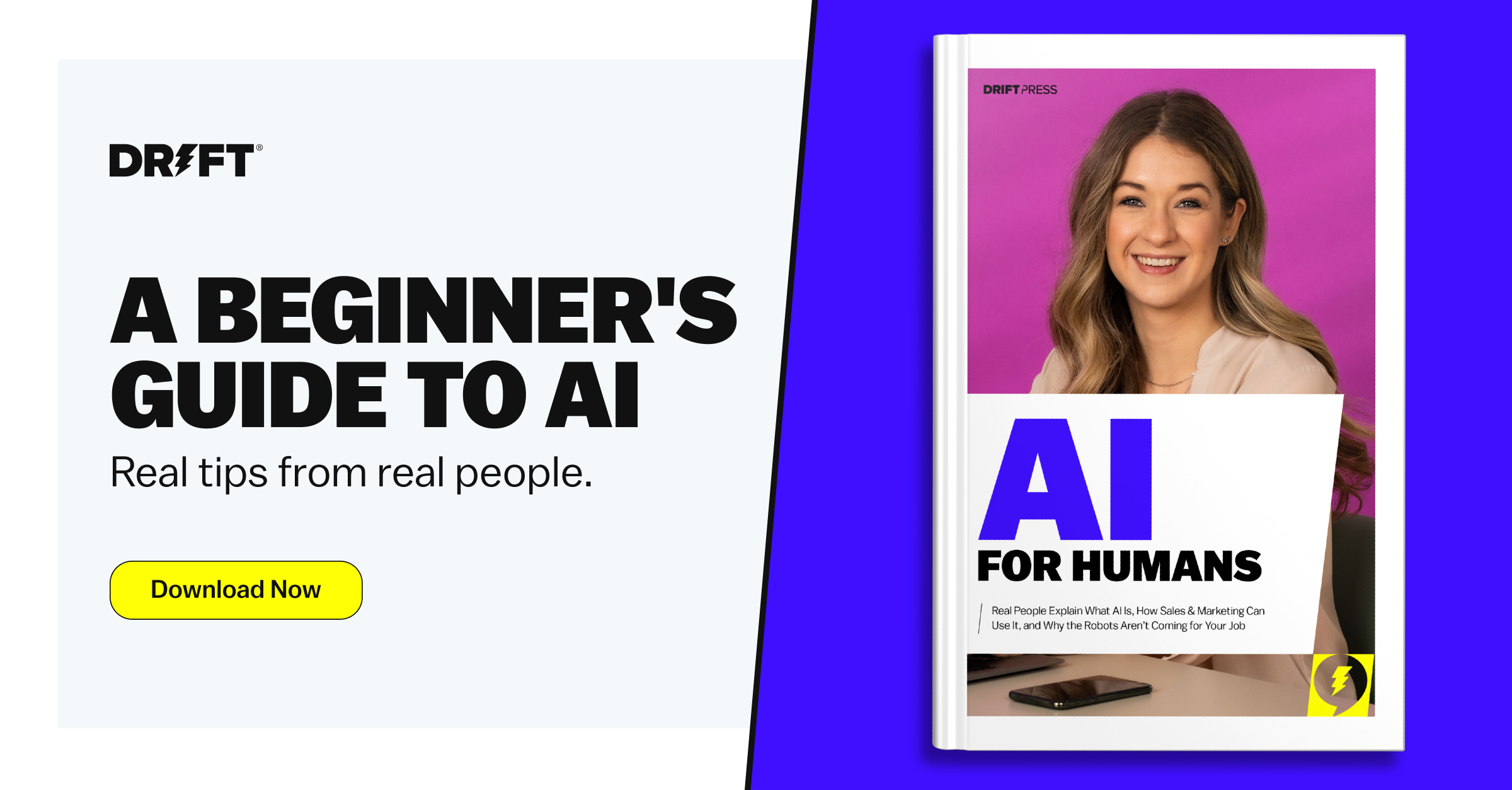A monthly take on what’s new in AI — personal stories, opinions, and inspiration from Drift’s leadership team. This edition is written by Drift’s SVP of Product, Matt Tippets.
What’s On My AI-Mind
The intelligence revolution is well underway. Self-driving cars and robot assistants were once considered sci-fi fantasies of the future. Now, thanks to AI, they’re here and only getting better every day. The best part is you don’t need a computer science degree or decades of experience to use the technology — it’s available for everyone, right now. AI and GPT allow us to make our lives more efficient in big and small ways. And in many cases, we don’t even think about it much anymore. From Siri to smart thermostats to ChatGPT, AI can help all of us move through our days more smoothly than ever before. While the excitement around generative AI has opened up more opportunities — and concerns — we’ve all become accustomed to the support and benefits of AI solutions and products.
Strong AI meets users where they are with what they need. What makes AI and GPT technology so unique is its ability to understand and contextualize what every individual user cares about and needs. Instead of foraging through search engines or Reddit posts for information, users can type a question into a GPT chatbot and receive a precise answer. AI is enabling one-to-one conversations in a way that technology has never done before, ushering in a new era of truly individualized communication and support.
Individualization is the new personalization. Personalization has meant “Dear Matt” at the top of a brand email instead of “Dear customer.” It has meant sending me an email with stores close to my house instead of a generic list of locations or changing the background of a website to my favorite color. These elements of personalization were once revolutionary, but today’s buyers barely bat an eye at them. Now, it’s time to take that personalization to the next level by clearly recognizing not only who the buyer is by name, but understanding what they’re looking for and how you can help — and that’s where AI comes in.
AI and GPT will change decision-making forever. When data was only stored in our minds, our decisions were necessarily instinctual and informed only by our experiences and relationships. Data then made its way onto the printed page and then the digital page and decision-making became more informed, more reliable. Now, data might as well be infinite… there’s too much for us to process on our own to make the best decisions. Consider Google Maps — a mundane but intelligent app — and how it helps us make decisions. It processes every reasonable route, evaluates traffic, fuel economy, and more to make a recommendation. And we (usually) trust it. As trust increases in AI, we’ll find friction removed from a variety of decision-making processes whether it’s which route to take to work or how to create an individualized experience for every prospect and customer.
GPT Made This for Me: Task Efficiency
As someone who builds conversational products for a living, GPT has become a great assistant in helping me experiment at scale. For example, this morning, I needed to test the effectiveness of a chatbot we wanted to launch on our site. Instead of sitting at my computer, trying to think of different ways to ask the same question — or other related questions, I typed in the questions to GPT to see what questions it could come up with. Then, I was able to copy and paste those questions into the bot and do a full round of testing in a matter of minutes. By saving time in the testing phase, my product team and I are able to iterate and build even faster.
The Single Best Thing I’ve Read About AI: Nielsen’s new study Information Foraging with Generative AI: A Study of 3 Chatbots








